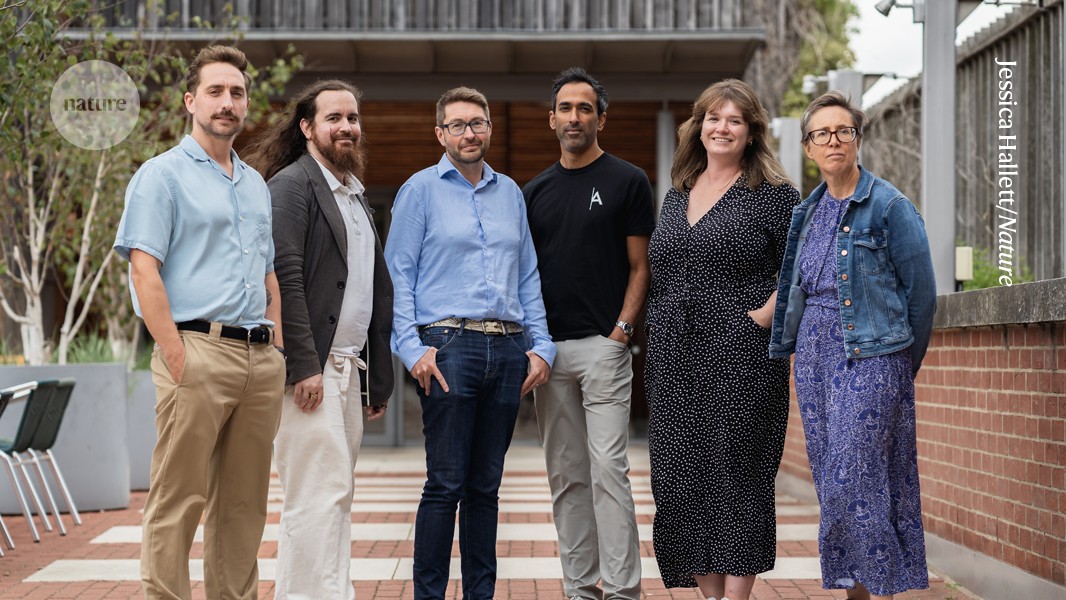After a decade building quantum-computing hardware, Jacques Carolan decided he needed a change. “I wanted to work on technologies that were more directly related to human health,” he says. So in 2021, he pivoted to neuroscience with the aim of building optical technologies to understand the brain.
Last year, another opportunity turned Carolan’s head. The UK government was setting up a high-risk research funding agency. It was modelled on the famed US Defense Advanced Research Projects Agency, or DARPA, which helped to pioneer some of the world’s most consequential technologies, including the Internet and personal computers. The UK version, the Advanced Research and Invention Agency (ARIA), aimed to mimic that success, except that it avoids DARPA’s connection to military research. ARIA sought its inaugural programme directors with a seductive application question: if you had £50 million in research funding to change the world, what would you do?
Carolan applied, highlighting his interest in developing technologies to treat neurological disorders. He is now one of the first eight programme directors at ARIA, where he has unusual freedom to select the projects that receive money from a 4-year, £800-million (US$1-billion) budget. “It’s been a wild journey,” says Carolan.
US agency launches experiments to find innovative ways to fund research
Funders and scientists around the world are watching to see whether ARIA can succeed in one of the most difficult challenges in science — working out how to spur researchers to develop truly revolutionary innovations.
Formally established in 2023 by an act of Parliament, ARIA is now in its first year of full operation. Its mission is to “empower scientists and engineers to reach for the edge of the possible and unlock breakthroughs that can benefit everyone”, says its chief executive, Ilan Gur, a materials engineer and entrepreneur who moved from Berkeley, California, to lead ARIA in London.
ARIA joins an ecosystem of funders that is dominated by UK Research and Innovation (UKRI), a government super-funder with a £9-billion annual budget that oversees discipline-specific research councils, and Innovate UK, which aims to commercialize technologies. But the research councils can be conservative in what they fund, and Innovate UK mainly aids technology transfer, says Paul Nightingale, who studies innovation policy at the University of Sussex near Brighton, UK.
“Having something that is focused on pushing the boundaries of really extreme, ambitious research — and having it managed in a DARPA sort of way — that isn’t something that UKRI really can do,” he says.
UKRI was consulted extensively on ARIA’s creation, says Daniel Shah, chief of investment planning and strategy at UKRI, and the organizations’ leaders connect regularly. “We’re looking to learn from the ARIA experience, and they’re looking to learn from us,” he says.
After the government announced ARIA’s creation in 2021, some researchers criticized its planning as being slow and opaque. But science-policy specialists say the agency has moved quickly since ‘exiting stealth mode’, as Gur puts it, last year. Almost all of the directors ARIA recruited have now defined their programme’s research focus. Carolan’s is on precision neurotechnologies; others span topics from artificial intelligence (AI) safety and robotics to engineering plants that are more resilient to pests and climate change. Some have advertised their first funding calls and made their first awards.
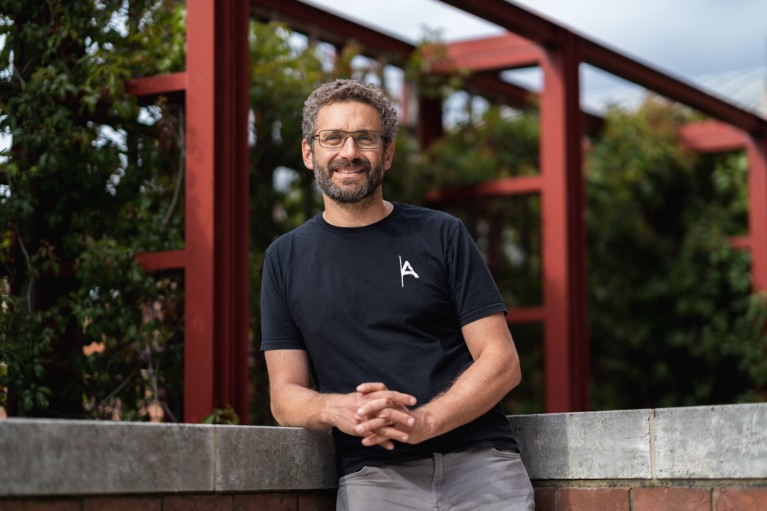
ARIA’s chief executive, Ilan Gur, was a programme manager at the US agency ARPA-E.Credit: Jessica Hallett/Nature
Enshrined in the directors’ roles is the ability to “shut-down or pivot dead-end efforts or double down on those that show promise”, says ARIA’s website — freedoms that don’t exist elsewhere in UK research funding.
The D-word
The idea of a ‘UK ARPA’ has been explored for years, says David Bott, an innovation specialist who holds a fellowship at Warwick Manufacturing Group, a privately funded research centre at the University of Warwick in Coventry, UK. Bott previously led a precursor to Innovate UK called the Technology Strategy Board, and as far back as 2013, he was part of a UK government fact-finding mission to study DARPA. But the idea came to fruition after appearing as an election-manifesto promise made by Boris Johnson’s Conservative Party in 2019.
Capturing the freedom of DARPA was the guiding principle in ARIA’s design — just without the focus on defence, says James Phillips, a systems neuroscientist who left research to lay the policy groundwork for ARIA in the UK Prime Minister’s office in 2020.
Although DARPA was founded as ARPA in 1958 by the US government in response to the Soviet launch of the Sputnik satellite, the defence element became integral to the US agency’s operations. Its ultimate goal was to ensure US technological supremacy on the battlefield. A truth that many in research funding acknowledge is that war is a more urgent incentive for progress than the more general goal of improving society.
But the defence focus is not the only thing that made DARPA successful, says Victor Reis, a retired US government official who directed the agency from 1990 to 1991. Four things were key to DARPA’s effectiveness, says Reis: freedom to make decisions, moving fast, term limits for programme managers and the ability to forge relationships with the most important people in research and industry.
The UK launched a metascience unit. Will other countries follow suit?
DARPA’s programme managers and office directors had more autonomy and power than is typical at funding agencies, and Reis found that making rapid decisions on their proposals was the key to being an effective head. “I said I will sign anything within 24 hours,” he says. “That made a lot of happy campers.”
Phillips’s small team especially wanted to define the scope of ARIA’s legal freedoms to operate as it pleased. For instance, would the new agency make a funding decision that government disagrees with? “That was very, very important to us,” says Phillips, now a senior policy adviser at the Tony Blair Institute for Global Change, a think tank in London. “Most of the time this research fails, and that’s what government doesn’t understand.”
Phillips’s other priority was finding the right leader — someone with intimate knowledge of the ARPA model. “The way we described this was a bit like a yoghurt culture. You’ve got to get a bit of the old culture to start the new one,” he says. Gur, an early programme manager at the US Advanced Research Projects Agency–Energy, a DARPA-style offshoot, was the ideal candidate, says Phillips.
Edge of the possible
The first cohort of programme directors began their term last October, and along with Gur, have a three-year term that can be extended.
The directors’ starting point was to define ‘opportunity spaces’ — areas “bigger than a programme, smaller than a field”, says Carolan, where they see scope for an innovation that would be highly consequential for society, but which lack attention and funding.
Most of those spaces have been honed into programmes, such as the one Carolan developed on neurotechnology, which is backed by £69 million. It highlights the burden of neurological diseases, from conditions such as Parkinson’s disease to mental-health disorders. Carolan hopes to help create technologies that will interface with the brain at the circuit level, because most brain disorders are rooted in its wiring, he says.
Essential to success, say the programme directors, is the freedom to fund a diverse community of scientists, technologists and businesses that might work together towards a goal, although taking different approaches. “How you fund science shapes how you do science,” says Gemma Bale, one of ARIA’s directors. She and others see ARIA as part of a wave of experimentation in metascience — the science of how research is conducted and funded.
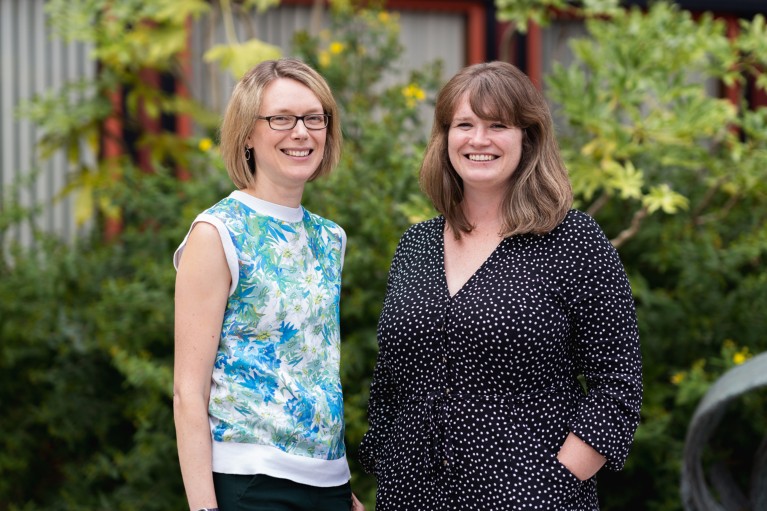
Sarah Bohndiek (left) and Gemma Bale co-direct an ARIA programme called Forecasting Tipping Points.Credit: Jessica Hallett/Nature
This month, Bale and her co-director, Sarah Bohndiek, announced their programme, called Forecasting Tipping Points. As the name suggests, it seeks to create an early-warning system for Earth’s climate tipping points. Bale and Bohndiek, both medical physicists who do part-time academic research at the University of Cambridge, UK, highlight huge gaps in monitoring Earth’s vulnerable environment. “We risk crossing climate tipping points within the next century,” says Bohndiek. “Without any early warning, we have no adequate way of preparing, adapting, mitigating or intervening.”
Scientific strength
ARIA’s overall annual budget is only 1.2% of the UK government’s 2022 spending on research and development. By comparison, DARPA’s, at $4.2 billion, represents 2.2% of the US federal government’s 2022 spend. Still, Gur sees the strength of ARIA as lying in the scientific talent that it can draw on.
There are a few comparable programmes around the world, says Nightingale, including Innosuisse in Switzerland; Innovation Fund Denmark; and the German agency SPRIND. SPRIND was established in 2019 and has a similar annual budget to ARIA — about €220 million (US$240 million) in 2024 (see ‘Disruptive funders’).
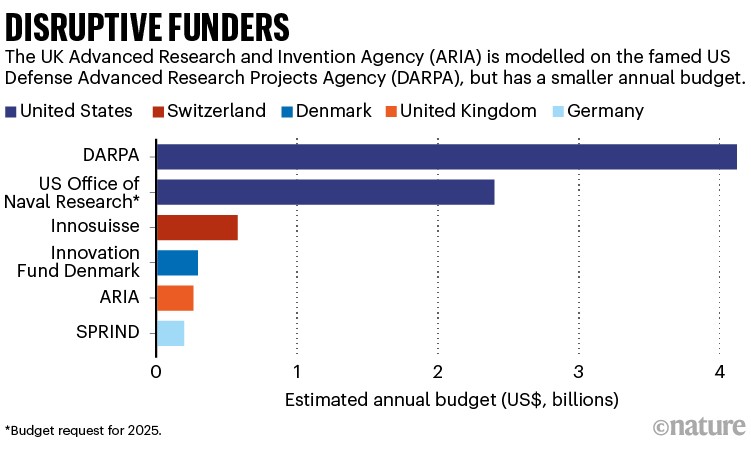
Source: Agency budgets analysed by Nature
Rafael Laguna de la Vera, SPRIND’s director, based in Leipzig, says that he was consulted by Phillips’s team and speaks occasionally to the ARIA leadership. SPRIND’s funding approach is more ‘bottom-up’ than ARIA’s, says Laguna de la Vera — the German agency maintains a rolling call for funding proposals. He says that the main challenge in building a disruptive funder has been convincing government ministries to give the agency the freedom to operate differently from existing funders.
“Our reason for existence is to do it differently than we did before. So here you have the conflict.” After establishing the agency, Laguna de la Vera fought for three years to get the German government to pass a law, similar to ARIA’s act of Parliament, that guarantees the funder freedoms in operation.
Nightingale suggests that the US Office of Naval Research — which is smaller than DARPA, with a $2.4 billion budget request for 2025 — might be a comparable agency. He says this is because of the way it selects the most promising applicants at industrial laboratories or universities, and because its outcomes have had a disproportionate impact.
First contracts
Researchers and science-policy specialists who Nature contacted say it’s hard to evaluate ARIA or find much to criticize so far, given that the agency has just started work. But a positive sign is that it has recruited well, Nightingale and others say. “It’s a very impressive, smart team,” says David Willetts, a former UK science minister who retains a strong interest in research and innovation policy.
At ARIA, Carolan is now fielding proposals for his first funding calls. Internal and external experts help to review applications. But the ARIA directors have the freedom to ultimately decide who receives funding.
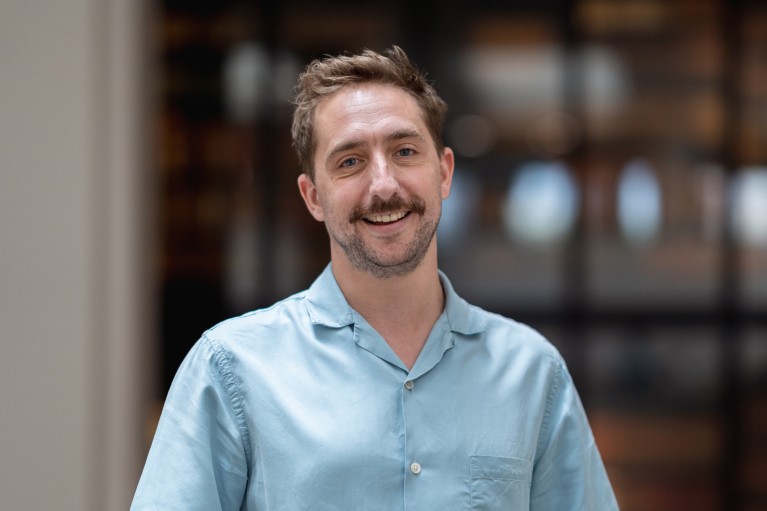
Jacques Carolan is director of an ARIA programme on precision neurotechnologies.Credit: Jessica Hallett/Nature
Other programme directors are flexing their freedoms in different ways. David ‘davidad’ Dalrymple, director of the £59-million programme on safeguarded AI, last month appointed artificial-intelligence pioneer Yoshua Bengio as his programme’s scientific director, to offer strategic advice and technical feedback. That appointment was an early indication of success, says Phillips, given Bengio’s sought-after status. The goal of Dalrymple’s programme is to construct an AI ‘gatekeeper’ system that is tasked with understanding and reducing the risks of other AI agents.
Feedback from the research community has also been positive. “I think they are doing something very, very important,” says Phillip Stanley-Marbell, a computer engineer whose firm Signaloid signed ARIA’s first funding contract, on improving the efficiency of large language models. Signaloid, a spin-out company of the University of Cambridge, hopes this work will contribute to wider efforts to stop the models ‘hallucinating’ information.
Stanley-Marbell, who also has a post at the University of Cambridge, has had a varied career in academia and at industry giants such as Apple. The difference with his previous grants is that the deliverables in his ARIA contract are specific and the contract can be terminated at any time. “It’s been a very rigorous but very pleasant process — very factual and very rational,” he says.
One controversial feature of ARIA is that, unlike other UK government funders and DARPA, it is not subject to freedom-of-information requests about its work. Laguna de la Vera says that exemption from such requests is a positive for a disruptive funder, in part because many people making the requests might misinterpret what an agency is doing. It also protects competitive interests, he argues. “It has nothing to do with military innovation or anything, but you want to be secret, right? Because we want to make this happen here in Europe and not to be stolen in a nanosecond by people we don’t like.”
UK ‘DARPA’ should let the sunshine in
ARIA says that the exemption was debated extensively by Parliament, and it keeps its “scientists’ focus where it matters most”. The agency adds that it is committed to building in the open, and publishes information on all its programmes and funded projects.
Exemption from scrutiny is a benefit, but also a risk, says Nightingale. “It may be that ARIA will invest in areas of research that are controversial, and then there will be pushback,” he says. “There are always trade-offs.”
At DARPA, there was an incentive to avoid controversy, says Reis, recalling what his superiors told him: “You can do whatever you want. Just stay out of the papers.”
A decade to shine
It will take years to evaluate ARIA’s success, say Nightingale and others. The agency’s existence is guaranteed for ten years in law, and Gur says that is the timescale over which its impact should be measured.
“One measure is a programme or a project that we fund leads to a technological breakthrough that just changes the conversation globally on what people think is possible,” he says.
But that will take time. At the end of Carolan’s programme, in four years, he doesn’t expect to have achieved it. “The length of the programme isn’t long enough to build a breakthrough technology, get it through the regulatory pipeline, do all your preclinical models and get into humans,” he says. His measure of success is “to de-risk technologies such that other folks can pick it up at the end of the programme”.
In future, Willetts would like to see big-spending government departments invest some of their money to develop technologies that originated from ARIA programmes. That “would be a great sign of success” that could make ARIA stand out globally, he says.
Many agree that it’s essential to accept failure in the arena of high-risk research. Maybe out of 20 projects, says Nightingale, 19 won’t do anything, but one could change the game. “Failure is a feature, not a bug.”

